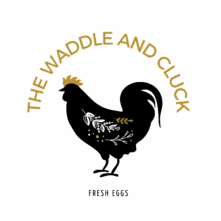Remember those big words we learned in 8th grade English class? Alliteration, assonance, and onomatopoeia—they’re not just for poetry or English exams. They describe the music in our language, the rhythm and resonance that make words come alive. Onomatopoeia is especially fun. It’s when a word imitates a sound: sizzle, buzz, crack, meow, boom. And yes, chickadee.
That cheerful name is more than just cute—it’s the bird’s own voice echoing through the trees. Chickadee-dee-dee! It’s not a name we gave them; it’s the name they gave themselves. Listen closely on a walk through the woods, and you’ll hear it, a whisper of sound bouncing between the branches.
Chickadees are small, but don’t let their size fool you. These birds are bold, curious, and full of personality. They flit through the trees like little acrobats, clinging upside-down to branches as they scan bark and leaves for hidden insects. When they’re not feasting on bugs, they’ll take seeds—especially sunflower seeds—snatching one at a time and flying off to crack them open in private.
The chickadees in our area are Carolina chickadees. They look nearly identical to their northern cousin, the black-capped chickadee, but with a slightly shorter song. It was the famed naturalist John James Audubon who first named the Carolina chickadee, recording its behaviors during his travels through the American South, particularly in South Carolina.

If you’ve ever seen one up close, you’ll recognize them by their tidy little uniform: a black cap and bib, bright white cheeks, gray wings and back, and soft, whitish bellies. Their coloring might seem simple, but there’s something elegant about it, like a bird dressed for an important occasion.
Chickadees are cavity nesters, which means they need holes—natural or artificial—for raising their young. In the wild, they’ll excavate their own cavity in rotted or soft wood, chipping away bit by bit with their tiny beaks. But they’re just as happy to move into a cozy birdhouse if you provide one. Around here, we usually find at least one pair using our bluebird boxes each spring. Peek inside (gently, of course) and you’ll find a nest lined with the softest material imaginable—moss, animal hair, and downy fibers. It’s a nursery fit for royalty, even if the royalty in question is just six tiny, speckled eggs.

Speaking of those eggs, they’re almost too delicate to believe: white with reddish-brown speckles, each one barely the size of a jellybean. The mother chickadee incubates them for about two weeks while the male brings her food. After they hatch, both parents stay busy feeding the growing chicks—mostly insects and caterpillars, which provide the protein the young birds need.


Chickadees don’t just charm us with their calls or their cleverness; they also play an important role in the ecosystem. By eating pests like beetles, aphids, and moth larvae, they help keep forest and garden environments in balance. Their habit of caching seeds—hiding them in bark or crevices to eat later—also helps with seed dispersal.

If you want to attract chickadees to your yard, keep it simple. They don’t need fancy feeders or gourmet blends. A basic feeder stocked with black oil sunflower seeds will do the trick. Add a few native shrubs or trees for shelter, and you’ll likely be rewarded with regular visits. You might even hear that familiar call again: chickadee-dee-dee, a melody that signals curiosity, intelligence, and the joy of a life lived among the treetops.
So the next time you hear the word chickadee, remember—it’s not just a name. It’s a sound, a song, and a story all in one. It’s language coming full circle, where the word and the world match perfectly.








